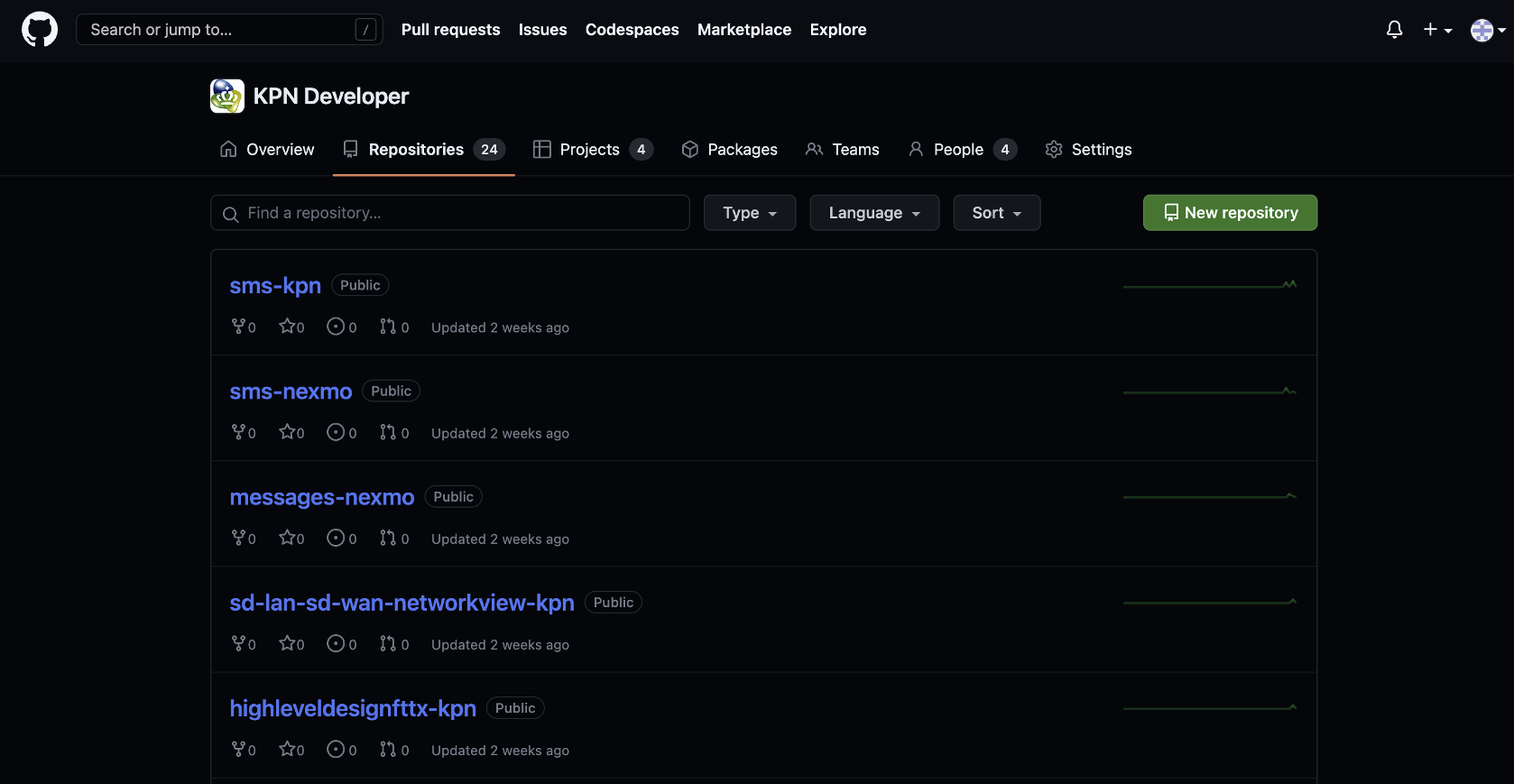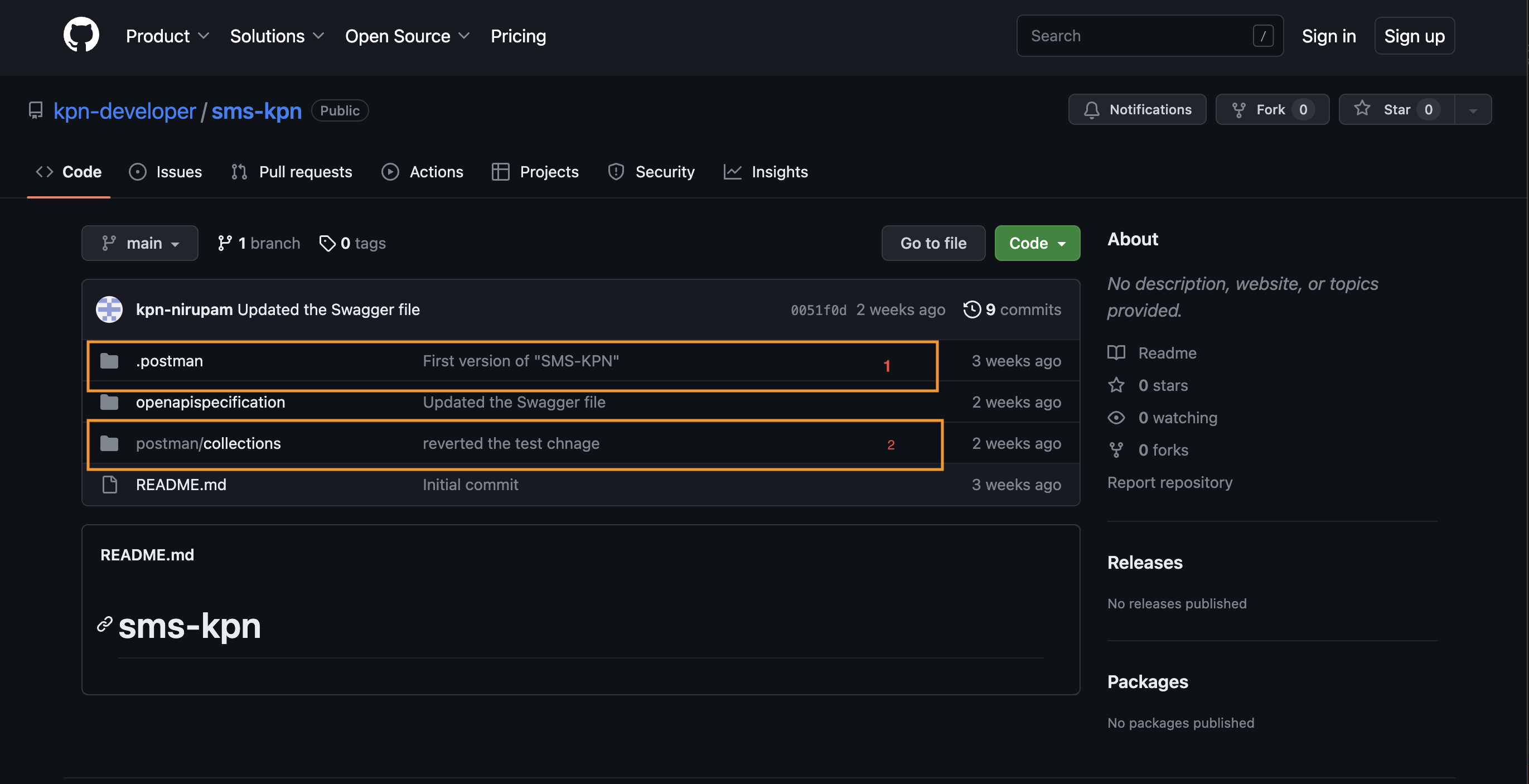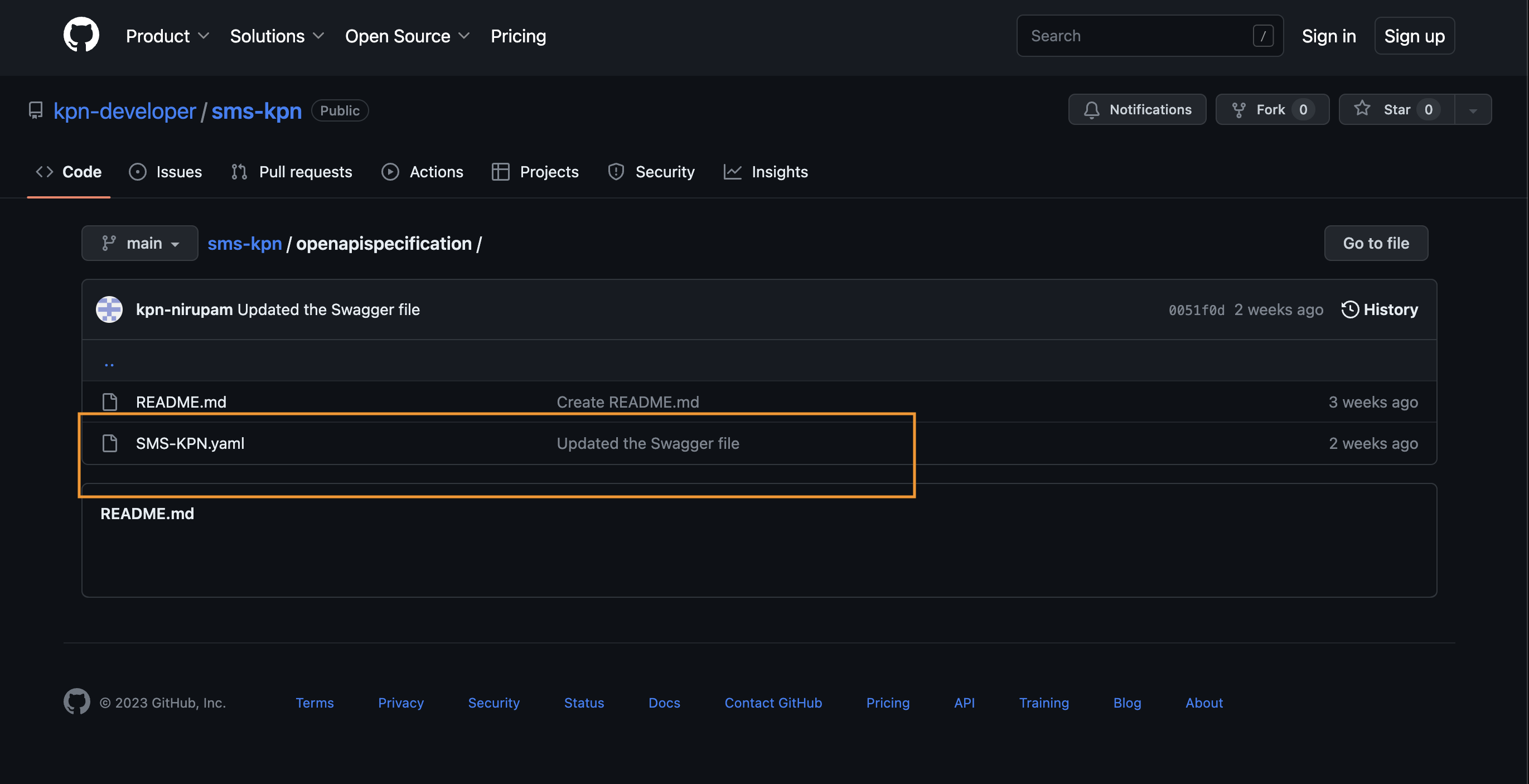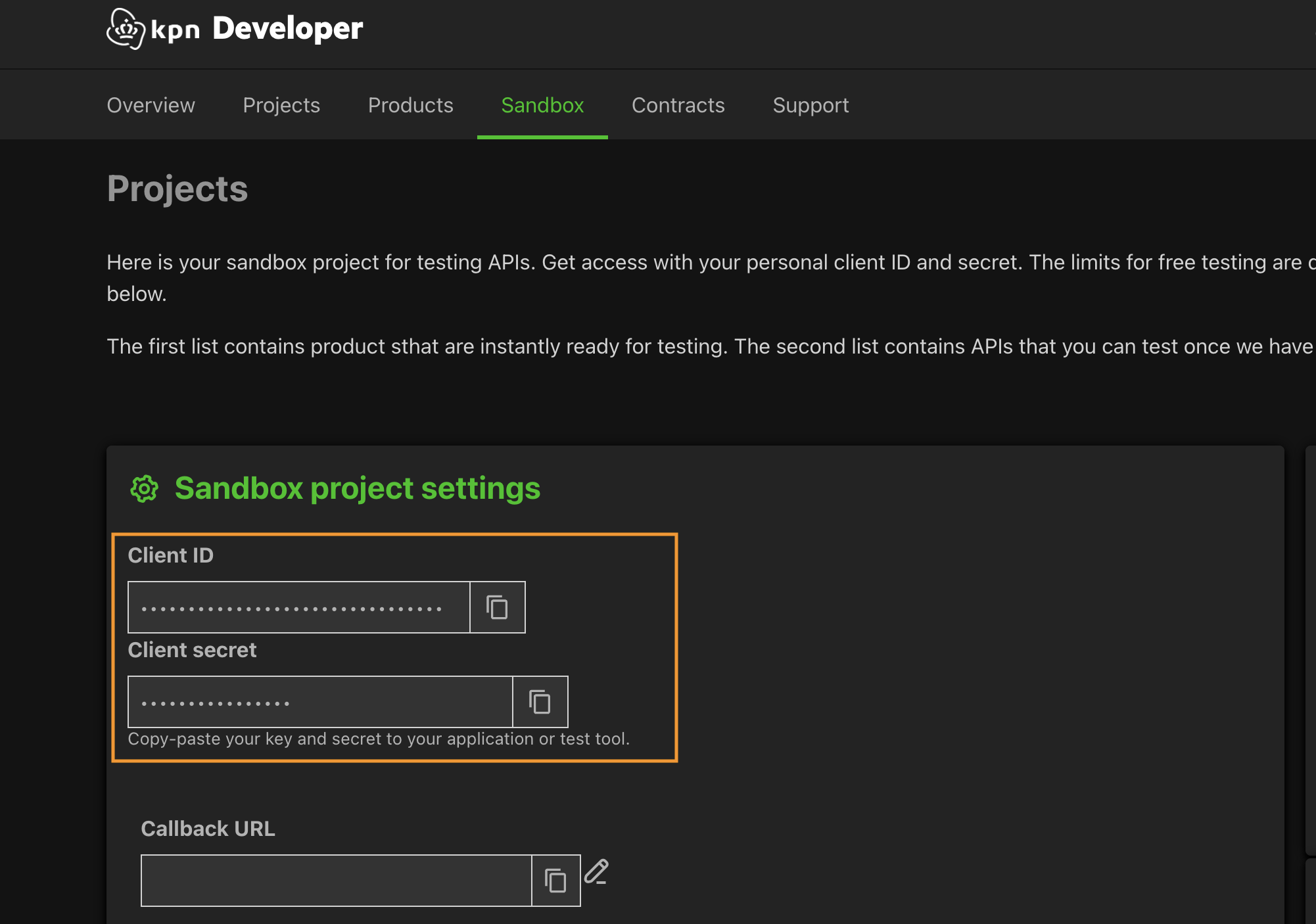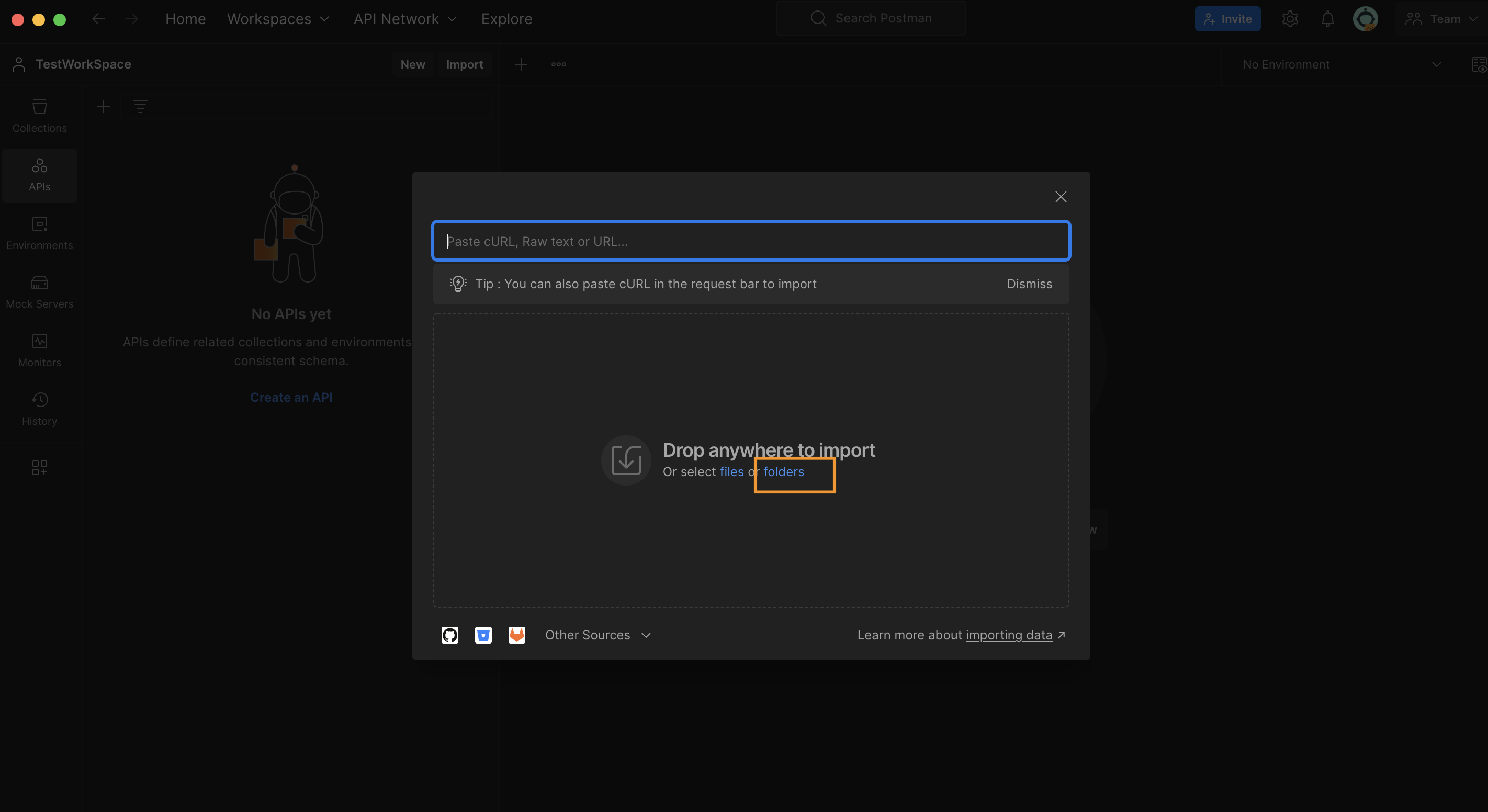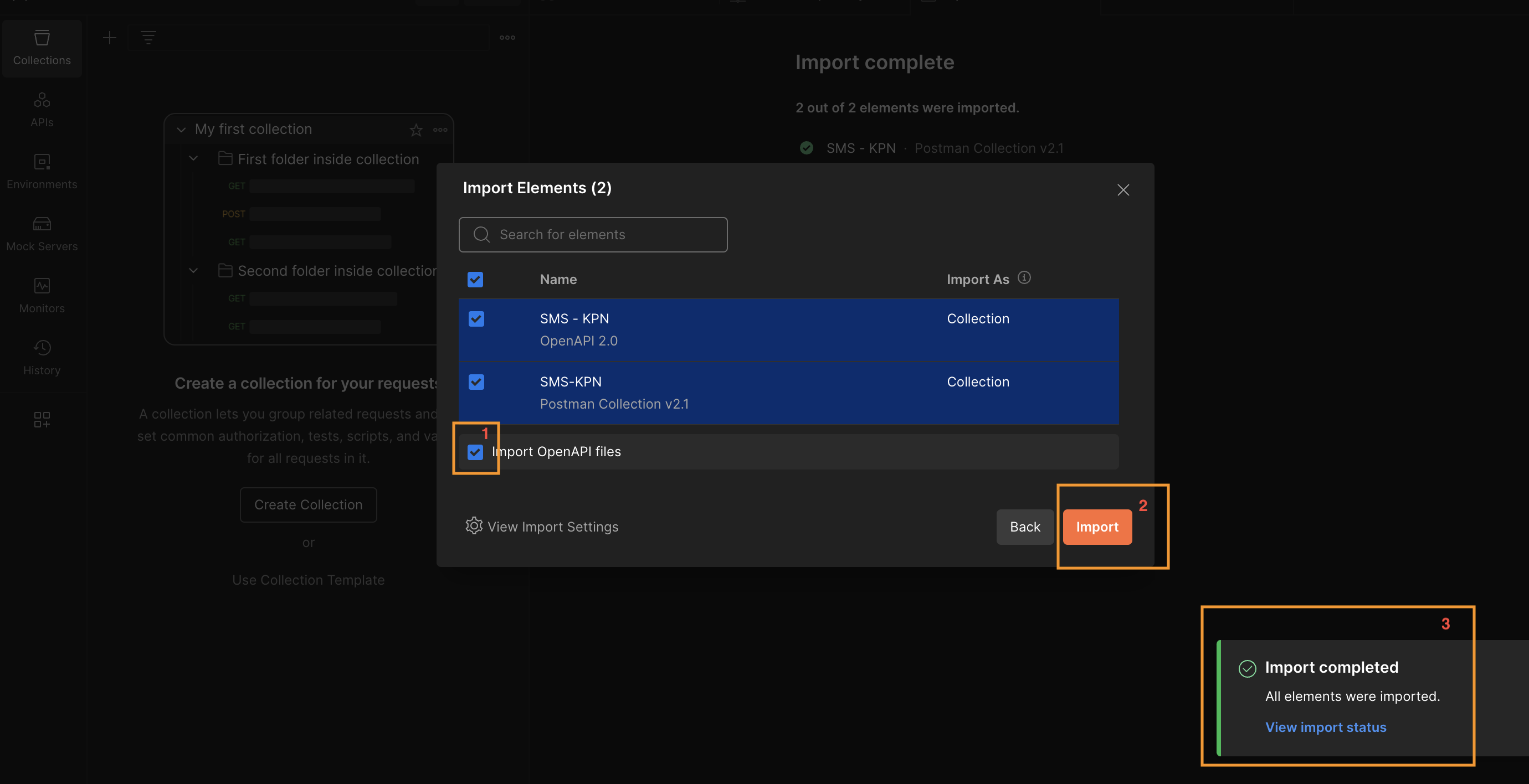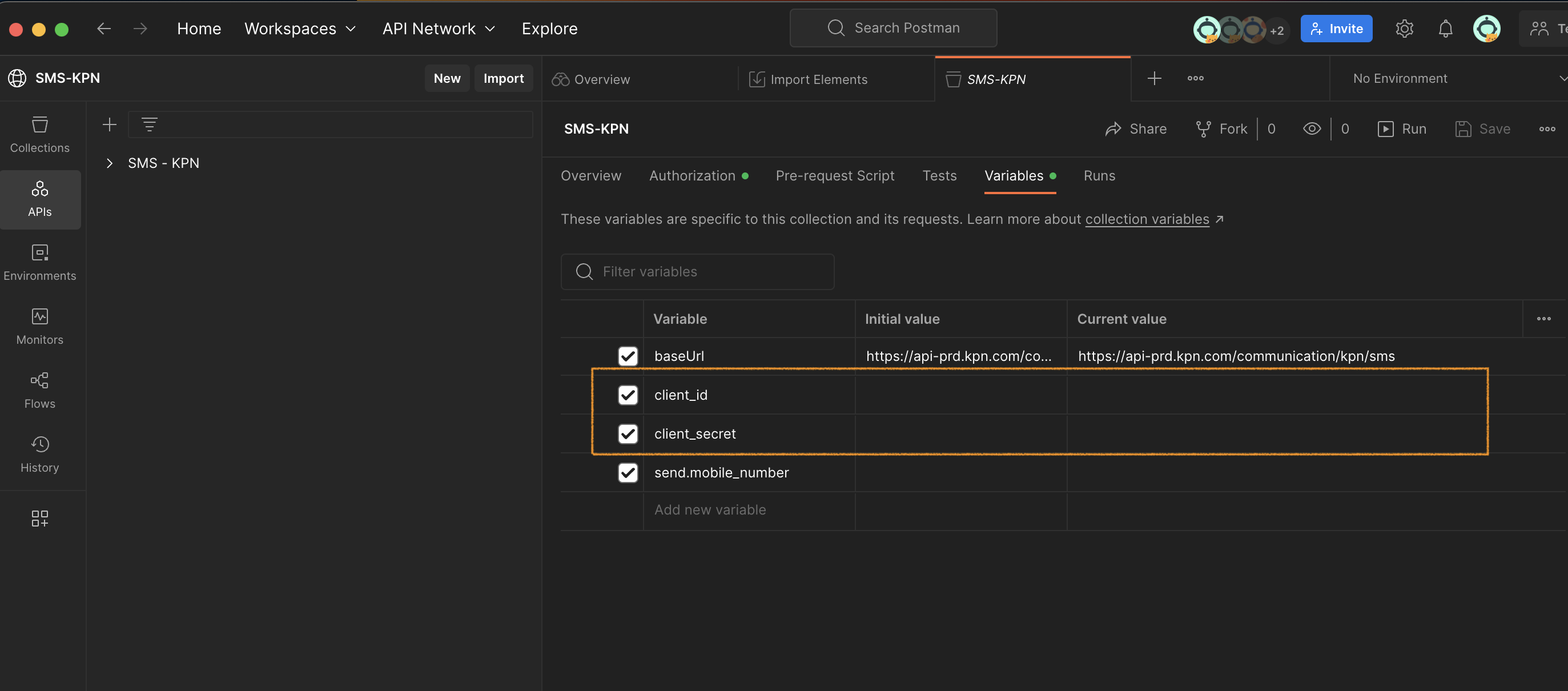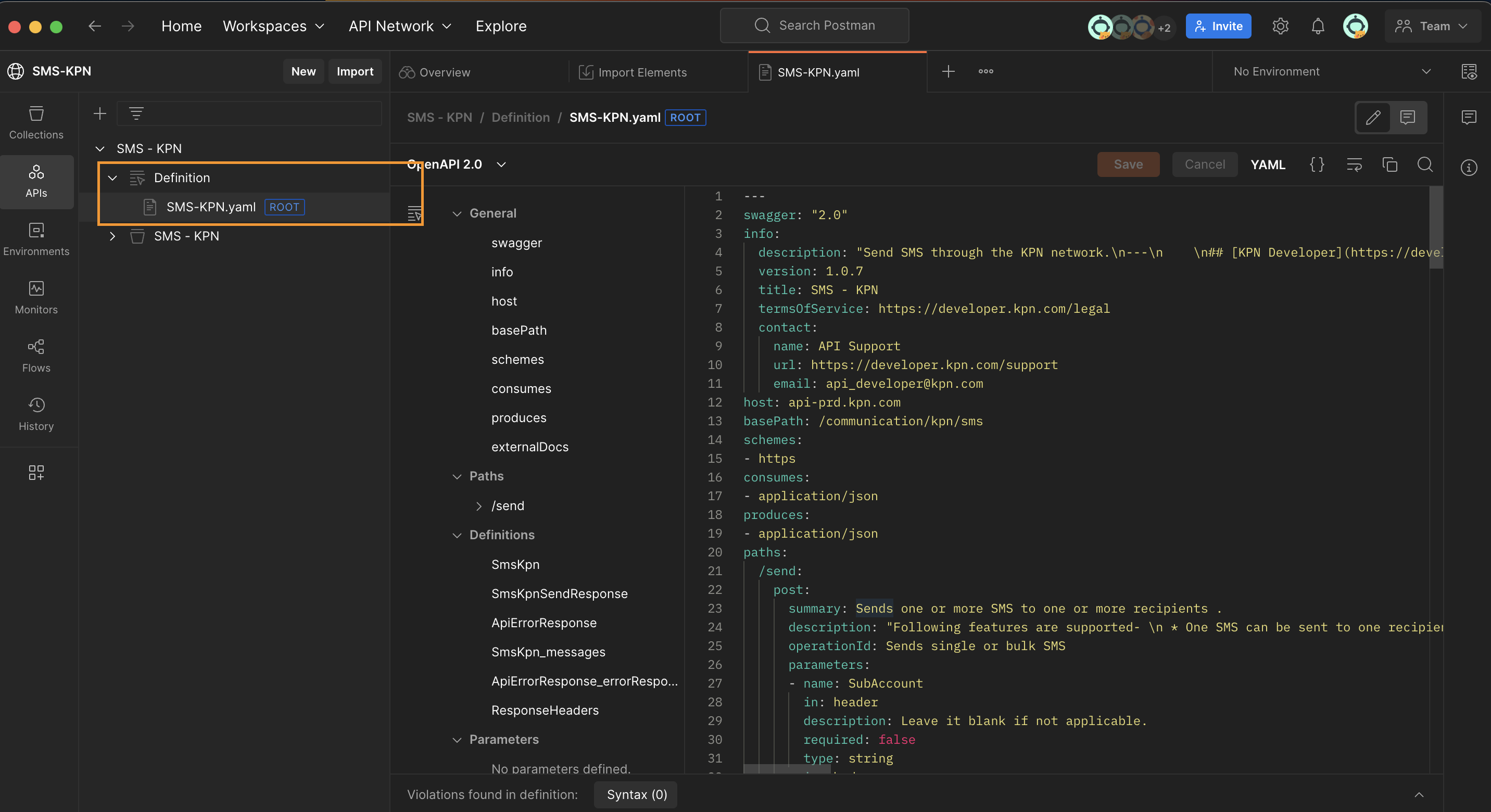Github
How to guide “KPN-Developer” Git repository.
Introduction:
We want to help you as a developer to build the user-friendly and convenient functionalities that you and your customers desire. That is why we designed a portal with high-quality developer-oriented products that are easy to integrate into your applications and services. Our products give you access to innovative communication, security, identity verification and more functionalities. All from a single account. This git repo contains the "Open API Specification" and Postman test Collection for different APIs. This Postman collection makes the API experience easy and seamless.
Access and Authentication:
The “KPN-Developer” repository can be accessed using the GIT repository link. It’s a public repository and can be accessed directly.
Repository Structure:
Repository name:
Every API has a separate repository, For example, "sms-kpn" in the image below. Also, the naming convention contains the name of the API provider. For example, "sms-kpn" suggests it is an API to send SMS, and the "KPN" offers the API.
Repository folder structure:
Postman APIs:
The below marked folders contain the artifacts of the “Postman Collection”. Which includes the “APIs” and the “Postman Collections”.
Open API Specification:
This folder contains the API Specification Document (Swagger file of the API).
Prerequisite Services and Recommended Tools.
Tools:
Postman (Mandatory): Postman is mandatory if you like to use the test collection for the APIs. You can also use it for checking the Open API Specification.
Swagger editor (Optional):
Swagger editor can be used if you like to experience the Open API specification and don’t have postman. Note: This will give you only limited experience.
Services:
This is needed for testing, using collection or Open API specification.
Sign in to the “KPN Developer Portal.”
Registration automatically creates a “sandbox” project. It will have an associated “Client ID” and “Client secret”. This project can be used to experience APIs in sandbox mode with a production-like feel with live data. The Client Id and Secret is used for authentication.
Getting Started:
Steps 1: Login to postman and create a workspace.
Step 2: Clone the API repository locally. Example “SMS-KPN”
Step 3: Go to the “Postman” workspace and select “import”.
Step 4: Select the “folder” option.
Step 5: Select the checkbox “Import OpenAPI files” and press “Import". It will give you the "import complete" message.
Step 6: You will have the imported “API“ and “Open API Specification” in the postman.
Step 7: The collection is ready for testing now. Update your “Client Id” and “Client Secret” and test the API.
Step 8: Open API specification can be checked at the “Definition” section.
